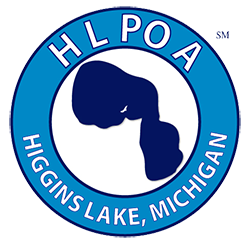Gerrish Lyon Utility Authority (GLUA)
Gerrish Lyon Utility Authority (GLUA) is a collaborative commission between Gerrish and Lyon Townships formed to take timely and responsible actions to reverse the detrimental impact of past and current waste water conditions. Its mission is to plan, adopt, and manage a modern wastewater treatment system that will protect the public health, as well as, preserve the environmental natural resources of the Higgins Lake Watershed for generations to come.
Higgins Lake Sewer Feasibility Study
The Higgins Lake Sewer Feasibility Study Summary, attached below, was presented by representatives of the engineering firm, Fleis & VandenBrink, at a public meeting on October 28, 2019, sponsored by the Boards of Gerrish and Lyon Townships. As additional information on this topic becomes available it will be posted here.
- Wastewater System Summary April 18, 2024
- Proposed Higgins Lake Public Sewer System, May 26, 2021
- Sewer Feasibility Study Presentation, Public Meeting October 28, 2019
Septic Systems Primary Source of Human Fecal Bacteria Levels
Linking fecal bacteria in rivers to landscape, geochemical, and hydrologic factors and sources at the basin scale.
Marc P. Verhougstraetea,1, Sherry L. Martin, Anthony D. Kendall, David W. Hyndman, and Joan B. Rose
This research paper, led by Michigan State University Professor Joan Rose and completed in 2015, conclusively shows that high concentrations of septic systems in large watersheds are the primary cause of high human sourced fecal levels. The densely populated Higgins Lake watershed is primarily served by septic systems and qualifies as such a watershed. Approximately 4,000 septic systems are in the Higgins Lake watershed.
To quote their conclusion:
“Using classification and regression tree analysis and demographic estimates of wastewater treatments per watershed, septic systems seem to be the primary driver of fecal bacteria levels. In particular, watersheds with more than 1,621 septic systems exhibited significantly higher concentrations of B. thetaiotaomicron. This information is vital for evaluating water quality and health implications, determining the impacts of septic systems on watersheds, and improving management decisions for locating, constructing, and maintaining on-site wastewater treatment systems.”
To read the full report click on the link below.
FLOW (For Love of Water) Deep Threats to our Sixth Great Lake
The Last Hold Out: Michigan’s Failure to Act on Septic System Pollution
In The Sixth Great Lake, FLOW reported that an estimated 10% of Michigan’s septic systems, approximately 130,000, are failing, releasing both bacteriological and chemical wastes to ground water and surface water. EGLE estimates that failing septic systems discharge more than 31 million gallons of raw sewage every day into groundwater, the equivalent of 47 Olympic -sized swimming pools. (See especially Chapter 3, page 12.)


